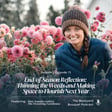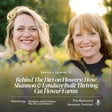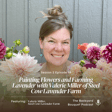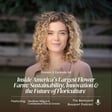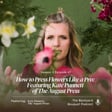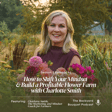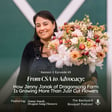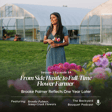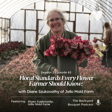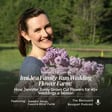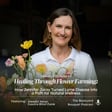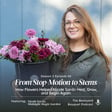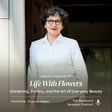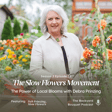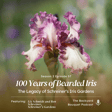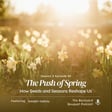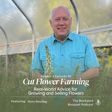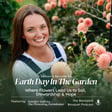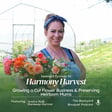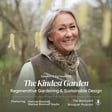
Ep.18 Capturing the Beauty of Flowers With Jess Buttermore of Cedar House Living
In this episode we are joined by Jess Buttermore, of Cedar House Living. Jess is a dedicated homesteader, published author, and passionate advocate for incorporating flowers and herbs into daily life in a mindful way. Located in the picturesque mountains outside of Seattle, Washington, Jess has cultivated a small three-acre farm that serves as a sanctuary for botanical enthusiasts of all ages and experience levels.
Jess shares her journey from being a photographer to becoming a flower farmer and herbalist. She discusses how her career transitioned during the COVID-19 pandemic, leading her to focus on her homestead.
Jess emphasizes the importance of understanding light when photographing flowers and provides valuable tips for capturing beautiful garden images using a smartphone.
The conversation delves into Jess's published works, including "The Love Language of Flowers," a book co-authored with Lisa McGinnis, which explores the meanings behind different flowers and herbs. Jess explains the significance of flowers like Hellebores, Dahlias, and Peonies, sharing personal stories and connections to these blooms.
Additionally, Jess shares her most recent book, "Seasonal Living with Herbs," which focuses on herb gardening and integrating herbs into everyday life and bouquets. She highlights the importance of understanding the meanings of herbs and flowers, as well as the practical aspects of gardening, such as seed starting and garden themes.
Tune in as this episode offers insights into flowers and the meanings, cultivation, and the joy they bring to both the grower and the recipient.
*****************************************************
Join Us In The Dahlia Patch!
Are you ready to grow beautiful, healthy, and abundant dahlias this year? If YES, then you're invited to grow with us in our online learning community! Join by May 1st for Founding Member Pricing
Join The Dahlia Patch As A Founding Member: https://thefloweringfarmhouse.mykajabi.com/the-dahlia-patch-founding-member
*****************************************************
In This Episode You’ll Hear About:
00:02:55 - Introduction of Jess Buttermore and Cedar House Living
00:08:02 - Importance of watching light for photography
00:14:31 - Tips for taking better pictures of flowers in gardens
00:31:41 -"The Love Language of Flowers" book
00:35:07 - Meaning of flowers in "The Love Language of Flowers" book
00:41:24 - Mother's Day arrangements
00:47:37 - Personal favorite flowers and their meanings
00:51:31 - "Seasonal Living with Herbs"
Learn more about Jess Butterfield & Cedar House Living:
- https://cedarhouseliving.com/
- https://www.instagram.com/cedarhouseliving/
- Mother’s Day Planter: https://cedarhouseliving.com/blogs/news/the-meaningful-mothers-day-planter
- Photography Tips: https://cedarhouseliving.com/blogs/news/artfully-photographing-your-homestead
***Rate, Review, & Follow The Backyard Bouquet***
If you enjoyed this episode, will you please consider leaving the podcast a review? Your review helps make the podcast more discoverable to others and allows me to continue creating more episodes. I'd love to know what you enjoyed most about the episode.
New episodes are coming every Tuesday to help keep your garden blooming!
Sign up for my newsletter: https://thefloweringfarmhouse.myflodesk.com/nlw4wua8s3
